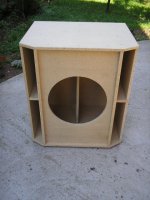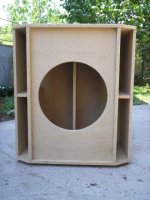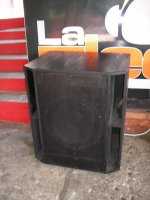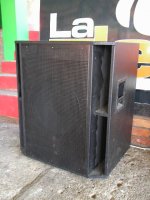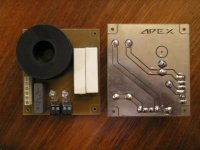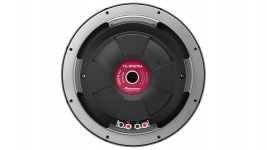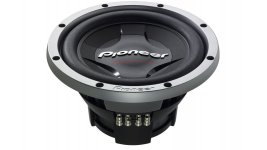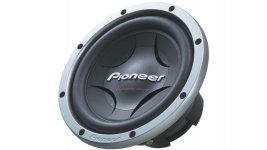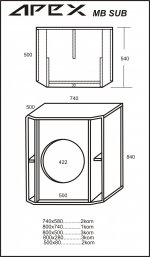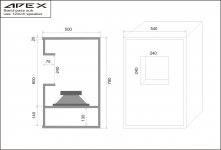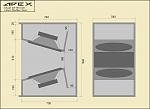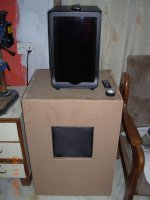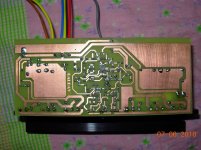Has anyone built the second horn listed in the first post?? And if so, what drivers did you use? What kind of extension do you get with that 15" horn?
Hi, Apex, i believe your PA projects are great for the common people!
Many just want to enjoy with music and dance and do not care about super-hi-fi sonics.
Thanks for sharing you real-world experience!
BTW, what about a speaker project with something like 4 x 5" ( or 4 x 6") car audio coax drivers? Wold be good for a small indoor PA, or for a guitar....
bye
effebi
Many just want to enjoy with music and dance and do not care about super-hi-fi sonics.
Thanks for sharing you real-world experience!
BTW, what about a speaker project with something like 4 x 5" ( or 4 x 6") car audio coax drivers? Wold be good for a small indoor PA, or for a guitar....
bye
effebi
hi apexaudio,
just like your amps, i like your enclosure designs also.
could you please take some time to design a bass reflex cabinet (similar to MB sub) or a horn reflex for my 12" pioneer TS-W307D2 Champion Series
thanks in advance
just like your amps, i like your enclosure designs also.
could you please take some time to design a bass reflex cabinet (similar to MB sub) or a horn reflex for my 12" pioneer TS-W307D2 Champion Series
thanks in advance
Attachments
helo , Good Day All,
*
Mihailo,You attached an interesting driver protection circuit. have u built it??? tell me the transistor function on it ???.
*
Mihailo,You attached an interesting driver protection circuit. have u built it??? tell me the transistor function on it ???.
hi apexaudio,
just like your amps, i like your enclosure designs also.
could you please take some time to design a bass reflex cabinet (similar to MB sub) or a horn reflex for my 12" pioneer TS-W307D2 Champion Series
thanks in advance
Use this band-pass design for maximum SPL
Attachments
Use this band-pass design for maximum SPL
Thanks alot, i appreciate your response.
Thanks again
Use this band-pass design for maximum SPL
Should i cover the inside walls with a carpet or glass wool sheet.
thanks
To avoid cancellation of rear and front wave
Since the rear of the driver is much closer to the mouth of the
horn, at very low frequencies it is effectively de-coupled from the
system and its radiation does not affect the total output. As
frequency increases the situation changes and the rear of the
driver begins to be coupled to the horn.
When the frequency is such that the horn is one-half wavelength
long the rear of the driver is fully coupled to the horn. The pressure
from the front and rear of the driver are of reverse polarity; a 180°
phase shift at all frequencies. The pressure from the front of the
driver (at the throat) and the pressure from the rear of the driver
(close to the mouth) are now approximately one-half wavelength
apart. This represents a phase shift of 180°. At this frequency
both the front and rear of the driver are driving the horn in phase.
When this happens the driver’s radiating surface area (Sd), as far
is the horn is concerned, had significantly increased (almost
doubled). Since the driver radiates from the front and back of the
diaphragm, this yields very different driver parameters than when
at the one-quarter wavelength resonance condition.
In real world applications where the measured SPL is comparable
for a conventional vented horn and a tapped horn design, the
diaphragm excursion of the driver is greatly reduced due to the
acoustical loading of the horn. This decrease in excursion will
translate directly into lower distortion and far higher output
capability
Suranjan
Since the rear of the driver is much closer to the mouth of the
horn, at very low frequencies it is effectively de-coupled from the
system and its radiation does not affect the total output. As
frequency increases the situation changes and the rear of the
driver begins to be coupled to the horn.
When the frequency is such that the horn is one-half wavelength
long the rear of the driver is fully coupled to the horn. The pressure
from the front and rear of the driver are of reverse polarity; a 180°
phase shift at all frequencies. The pressure from the front of the
driver (at the throat) and the pressure from the rear of the driver
(close to the mouth) are now approximately one-half wavelength
apart. This represents a phase shift of 180°. At this frequency
both the front and rear of the driver are driving the horn in phase.
When this happens the driver’s radiating surface area (Sd), as far
is the horn is concerned, had significantly increased (almost
doubled). Since the driver radiates from the front and back of the
diaphragm, this yields very different driver parameters than when
at the one-quarter wavelength resonance condition.
In real world applications where the measured SPL is comparable
for a conventional vented horn and a tapped horn design, the
diaphragm excursion of the driver is greatly reduced due to the
acoustical loading of the horn. This decrease in excursion will
translate directly into lower distortion and far higher output
capability
Suranjan
Attachments
Use this band-pass design for maximum SPL
What would be the frequency response of this Enclosure. (fs=40hz???)
sure I sound naive 😀
but it is quite interesting.
Use this band-pass design for maximum SPL
HI APEX,
I made this enclosure. this sounds great, specially at lower frequencies.
below ate some of the pics. still i have to mount glass wool and decorate the exterior.
thanks alot.
Attachments
-
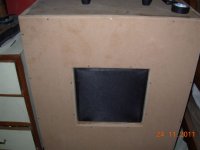 DSCN3073.JPG78 KB · Views: 307
DSCN3073.JPG78 KB · Views: 307 -
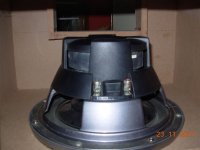 DSCN3072.JPG75.5 KB · Views: 287
DSCN3072.JPG75.5 KB · Views: 287 -
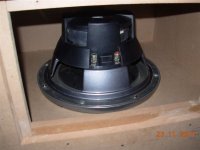 DSCN3071.JPG80.1 KB · Views: 324
DSCN3071.JPG80.1 KB · Views: 324 -
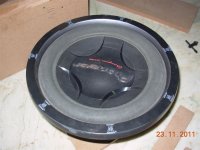 DSCN3070.JPG108.8 KB · Views: 330
DSCN3070.JPG108.8 KB · Views: 330 -
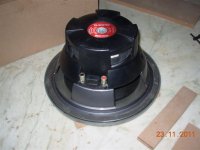 DSCN3069.JPG83.4 KB · Views: 283
DSCN3069.JPG83.4 KB · Views: 283 -
 DSCN3068.JPG68.7 KB · Views: 2,036
DSCN3068.JPG68.7 KB · Views: 2,036 -
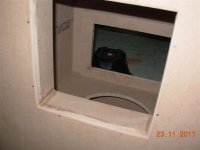 DSCN3067.JPG71.8 KB · Views: 2,091
DSCN3067.JPG71.8 KB · Views: 2,091 -
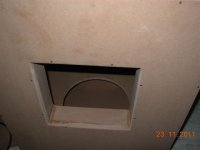 DSCN3066.JPG71.6 KB · Views: 2,133
DSCN3066.JPG71.6 KB · Views: 2,133 -
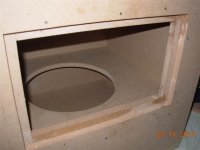 DSCN3065.JPG73.4 KB · Views: 2,179
DSCN3065.JPG73.4 KB · Views: 2,179 -
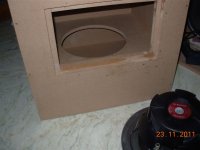 DSCN3064.JPG75.2 KB · Views: 2,243
DSCN3064.JPG75.2 KB · Views: 2,243
HI APEX,
I made this enclosure. this sounds great, specially at lower frequencies.
below ate some of the pics. still i have to mount glass wool and decorate the exterior.
thanks alot.
one more pic
Attachments
Last edited:
Nice work, what kind of x-over, and what amplifier you use?
Regards
hi apex,
I use your subwoofer active crossover and a B500 for the subwoofer. for speakears, i use STK 3062 (60w /ch)
thanks
Attachments
Last edited:
Simple HF x-over for PA drivers with two halogen lamps (G4 12V 35W) for protect protect.
can u share this pcb an schematic sir.
- Home
- Live Sound
- PA Systems
- DIY PA Speakers Setup (Line Array)
